Hauora: Taha Tinana - Physical Health
A DigitalNZ Story by National Library Services to Schools
Taha tinana - physical wellbeing involves a range of issues that contributes to overall physical wellbeing. This story covers measures for taha tinana and what this means for children and youth of Aotearoa New Zealand.
Tama tu tama ora, tama noho tama mate.
An active person will remain healthy while a lazy one will become sick.
Primary school children enjoy physical activity in the sunshine.
NZEI Te Riu Roa (New Zealand Educational Institute)
BACKGROUND
Health is a state of complete physical, mental and social well-being and not merely the absence of disease or infirmity.
In New Zealand, the concept of hauora (health) is holistic and goes beyond physical, mental and social wellbeing. According to the Te Whare Tapa Whā Māori model of health developed by Māori health expert Mason Durie, there are four walls and a floor that contributes to overall health and wellbeing.
- Taha hinengaro - mental and emotional wellbeing
- Taha whānau - social wellbeing
- Taha tinana - physical wellbeing
- Taha whenua - connection with the land and environment wellbeing (a later addition to the model)
- Taha wairua - spiritual wellbeing
Māori health: te whare tapa whā model
Manatū Taonga, the Ministry for Culture and Heritage
This story is about Taha tinana - physical health. It covers many aspects of physical health, including why it is important, how to achieve and maintain it and what this means for all New Zealanders.
CONTENTS
This story on physical wellbeing contains the following:
- What is physical health?
- Importance of physical health
- Measures to improve physical health
- Physical activity
- Spending time outdoors
- Healthy eating
- Maintaining a healthy weight
- Personal hygiene
- Sleep and rest
- Hydration
- Avoiding alcohol and substance abuse
- New Zealand's Physical Literacy Approach
- The importance of playgrounds in New Zealand
- Quick facts
- Glossary
- Supporting resources
- Images of children's physical activity in New Zealand — enjoy!
- A gallery of posters on health and wellbeing in New Zealand
KiwiSport kids, Papakura, 1996.
Auckland Libraries
WHAT IS TAHA TINANA - PHYSICAL HEALTH?
Definitions of physical health from a New Aotearoa Zealand perspective include:
Focuses on physical well-being and bodily care. Tinana suffers when a person is under emotional stress, or is unwell. Pain in different parts of your body is tinana communicating what is going on consciously or unconsciously. For example, someone who is stressed or unhappy in their career or work may be more likely to become physically ill.
Te Whare Tapa Whā model developed by Mason Durie.
Our physical ‘being’ supports our essence and shelters us from the external environment. For Māori the physical dimension is just one aspect of health and well-being and cannot be separated from the aspect of mind, spirit and family.
Health Camp sports
Auckland War Memorial Museum Tāmaki Paenga Hira
Keeping children healthy
Manatū Taonga, the Ministry for Culture and Heritage
Health posters: physical activity
Manatū Taonga, the Ministry for Culture and Heritage
THE IMPORTANCE OF PHYSICAL HEALTH FOR CHILDREN
The Education Act 1877 said that every school should have a playground. From 1902 physical education was compulsory for public school children over eight years old.
In the 1940s the Department of Internal Affairs employed physical welfare officers who encouraged playgrounds in new suburbs, ran after-school and holiday recreation programmes and fostered links between school leavers and sports clubs.
In 1988 New Zealand’s Hillary Commission started KiwiSport. It promoted simplified forms of sports to inspire children and train them in basic skills. Almost 30 simple forms were developed, from Kiwi cricket to Kiwi judo.
Source: Government and sport, Te Ara — the Encyclopedia of New Zealand.
The World Health Organisation recommends that physical activity for children aged 5 - 17 years will help:
- develop healthy musculoskeletal tissues (i.e. bones, muscles and joints);
- develop a healthy cardiovascular system (i.e. heart and lungs);
- develop neuromuscular awareness (i.e. coordination and movement control);
- maintain healthy body weight.
Physical activity has also been associated with psychological benefits in young people for example improving their control over symptoms of anxiety and depression. Similarly, participation in physical activity can assist in the social development of young people by providing opportunities for self-expression, self-confidence, and social interaction. It's also been suggested that physically active young people more readily adopt other healthy behaviours (e.g. avoidance of tobacco, alcohol and drugs) and demonstrate higher academic performance at school.
Exercising for health
Manatū Taonga, the Ministry for Culture and Heritage
'MP skips with students', Papatoetoe, 1992
Auckland Libraries
Mount Primary children ready to tramp Aongatete camp 1994
Tauranga City Libraries
MEASURES TO ACHIEVING PHYSICAL HEALTH
During the 2010s the government funded children’s sport through the KiwiSport arm of Sport New Zealand. It provided grants to sports clubs to encourage skill development in a wide range of codes from basketball and tennis through to weightlifting and surfing.
Source: Children and sport - Greater diversity, 1970 to 2010s, Te Ara — the Encyclopedia of New Zealand.)
PHYSICAL ACTIVITY
In physical education, the focus is on movement and its contribution to the development of individuals and communities.
The Ministry of Health recommends that children and young people need at least one hour of moderate to vigorous activity spread over a day. This could involve participation in:
- moderate-intensity activities (skateboarding, brisk walking, dancing, kapa haka)
- vigorous-intensity activities (skipping, games like football and rugby, waka ama)
- muscle-strengthening activities (tug-of-war, tree climbing, swinging on playground equipment), and
- bone-strengthening activities (games like hopscotch, gymnastics, jumping on a trampoline).
Sport NZ has partnered with the Ministry of Health and Education to promote Healthy Active Learning for better education and health outcomes for young New Zealanders.
Healthy Active Learning is a new Wellbeing Budget initiative that will promote and improve healthy eating and physical activity in schools, kura and early learning services across Aotearoa.
It’s based on evidence showing children’s nutrition and physical activity are linked to both academic achievement and improved physical and mental health.
It has 3 components:
- New Health and Physical Education and Hauora curriculum resources (Ministry of Education)
- Toolkits and a health promotion workforce to support the adoption and implementation of healthy food and water-only policies (Ministry of Health)
- A physical activity workforce (Sport NZ).
Girls of Pakotai School demonstrating ti rakau (Maori stick games)
Alexander Turnbull Library
Hoon Hay School Kapa Haka performance
Christchurch City Libraries
Traditional Māori games and sports
Sports and games, widely played by both adults and children, were important in traditional Māori society. As well as providing entertainment, they could be educational or form part of a ritual.
Games are considered part of te whare tapere (the house of entertainment, also known as whare ngahau, whare tākaro and whare rēhia). This is a branch of knowledge that also encompasses the performing arts.
Sports and games fall within the realm of the atua Rongomaraeroa, representing peace and harvest bounty. They were played at gatherings where there was an abundance of kai (food).
Source: Traditional Māori games — ngā tākaro, Te Ara — the Encyclopedia of New Zealand.
Waka ama
Manatū Taonga, the Ministry for Culture and Heritage
SPENDING TIME OUTDOORS
School camps were organised locally and informally until the late 1930s, when the 1935 Labour government promoted a progressive educational philosophy influenced by US and European ideas. These favoured engaging the ‘whole child’, rather than simply the brain, and advocated nature study and physical activity alongside classroom work. From this period the government’s Education Gazette published articles promoting the educational benefits of school camps, including ‘the development of such qualities as initiative, self-confidence and independence.
At both primary and secondary levels, camping was by far the most common single outdoor activity. In 1999 it became a formal part of the school curriculum.
Source: School camps — Camping, Te Ara — the Encyclopedia of New Zealand.
Burning calories and absorbing Vitamin D are two major benefits of outdoor exercise for children. Some ways to keep active and enjoy nature include.:
- gardening
- walking
- tramping
- outdoor sports like football, rugby, netball
- cycling
- swimming.
Keeping Kites Flying - Tales from Te Papa episode 115
Museum of New Zealand Te Papa Tongarewa
Researching UV and vitamin D links
Science Learning Hub
Gardening
Auckland War Memorial Museum Tāmaki Paenga Hira
Māori were strong swimmers. A number of different strokes were practised, including kautāhoe (sidestroke), kau āpuru (breaststroke), kau kiore (backstroke) and kau tāwhai (crawl). Kautāhoe was favoured, especially for long distances.
Children were introduced to the water as babies. Floats called pōito hue, made from dried gourds, were sometimes attached to children when teaching them to swim. The famous ancestor Hinemoa used pōito hue in her swim from Ōwhata on the shore of Lake Rotorua to Mokoia Island.
Source: Traditional Māori games — ngā tākaro — Water sports, Te Ara — the Encyclopedia of New Zealand.
Maori Children, New Zealand
Auckland Libraries
HEALTHY EATING
Once the School Dental Service was established in 1919 and the Department of Public Health assumed responsibility for the School Medical Service in 1921, close attention was also paid to child nutrition. From 1937 to 1967 free milk for schoolchildren was the department’s key nutritional initiative.
The appointment of a nutritional officer (Dr Muriel Bell) by the department in 1940 signalled a broader focus on the nutritional health of the whole population.
Source: Healthy bodies — Public health, Te Ara — the Encyclopedia of New Zealand.
A healthy balanced diet is needed for normal growth and development. Children need to eat a variety of foods from the four main food groups every day to provide them with vitamins, minerals and other nutrients. The food groups are:
- vegetables and fruit
- bread and cereals
- mild and milk products
- meats, chicken, seafood, eggs, legumes, nuts and seeds.
Encouraging healthy eating
Manatū Taonga, the Ministry for Culture and Heritage
Healthy school lunches
Manatū Taonga, the Ministry for Culture and Heritage
Adolescent diet
Science Learning Hub
Māori foods – kai Māori
From the late 20th century there was a marked resurgence of interest in traditional and regional foods globally, as well as in healthier and more sustainable ways of eating. For this reason, interest in kai Māori (Māori food) grew, both in New Zealand and internationally.
Traditional Māori foods were adapted to the modern palette, and new products were developed from ancient ingredients, with kai Māori enjoyed both for its nutritional value and its distinct New Zealand flavour.
Source: Modern cuisine — Māori foods — kai Māori, Te Ara — the Encyclopedia of New Zealand.
Contemporary Māori cuisine
Manatū Taonga, the Ministry for Culture and Heritage
MAINTAINING A HEALTHY WEIGHT
The typical New Zealand diet, which included plenty of red meat, home baking and full-fat dairy products, was shown to lead to high cholesterol levels and excessive weight. Obesity, in particular, was proven to be a risk factor for diseases such as type 2 diabetes, heart disease, stroke, some cancers, osteoarthritis, sleep apnoea and reproductive abnormalities.
By 1980 reports on children’s heights and weights noted that children were not getting taller, but they were getting heavier. Childhood obesity was becoming a worry. The 2002 National Children’s Nutrition Survey confirmed the fear: 21.3% of children were overweight and another 9.8% were obese. The 2011/12 New Zealand Health Survey delivered the same news, noting that obesity rates among children were continuing to rise. The obesity rate for Māori children was twice that of non-Māori children; the rate for Pacific children was three times the rate of non-Pacific children.
Source: Obesity and health concerns — Body shape and dieting, Te Ara — the Encyclopedia of New Zealand.
Child obesity: the exercise solution
Manatū Taonga, the Ministry for Culture and Heritage
Different exercise regimes needed by Maori - psychologist
Radio New Zealand
Research to tackle obesity via rugby clubs
Radio New Zealand
Māori physique
On his first visit to New Zealand, in 1769–70, British explorer James Cook described Māori as ‘a Strong, rawboned, well made, Active People, rather above than under the common size, especially the Men’.1 Joseph Banks, the naturalist and botanist who travelled with Cook on this expedition, noted that the ‘men are of the size of the larger Europaeans, Stout, Clean Limnd and active, fleshy but never fat as the lazy inhabitants of the South Sea Isles are, vigorous, nimble and at the same time Clever in all their excersizes’.
Source: Average heights and weight — Body shape and dieting, Te Ara — the Encyclopedia of New Zealand,
Rise in Pasifika child obesity sparks calls
Radio New Zealand
PERSONAL HYGIENE
In 1977, aged 86, politician John A. Lee wrote: ‘Men have gone to the moon and marvelled, but no greater event occurred on this earth than the abundance of soap and the unheralded arrival of hot and cold water by the turning of a tap. It is a gift of my lifetime, as is the leisure to use it. A rocket to the moon put millions of miles on to exploration potential; but hygiene – made possible by instant hot and cold water – probably doubled our life span’.
Bathing eventually increased in frequency after electrically heated water became more common in the 1930s. By then, cheap, commercially made soap was readily available. School doctors recommended a daily cold and weekly warm bath, highlighting the still limited availability of hot water.
In 1951 the ‘Survey of dirty children’ investigated 107 children living in Auckland’s Freemans Bay, then a poor suburb. Half the homes had no bath and 90% no hand-washing basin. This highlighted the links between hygiene, poverty and ethnicity – almost two-thirds of the children were Māori or Pacific.
Source: Bathing and personal hygiene— Washing, cleaning and personal hygiene, Te Ara — the Encyclopedia of New Zealand.
Developing good personal hygiene kills germs, keeps children healthy and boosts self-esteem and confidence. The basic essentials of personal hygiene should inlcude:
- hand washing
- daily bath
- clean clothes
- dental hygiene.
Small boy in a bath : digital image
Wairarapa Archive
Boys cleaning their teeth after breakfast
Museum of New Zealand Te Papa Tongarewa
Poverty and tooth decay go hand-in-hand
Radio New Zealand
Dental Hygiene
In New Zealand, dentists, dental therapists (previously called dental nurses), dental hygienists, oral health therapists and dental technicians are the chief providers of dental care. Dental care is delivered by a mixed state and private dental service model; children and adolescents up to the age of 18 years have free dental care but adults must pay for their own care (although some funding is available for emergency treatment).
In the 19th century Māori often had better teeth than Pākehā, because they had less access to sugar and they ate less frequently during the day. Their oral health, however, appeared to deteriorate rapidly when they adopted more ‘westernised’ diets. By the mid-1930s the Dental Officer for the Native Schools observed that there was now very little difference between Māori and non-Māori children’s teeth: ‘Both were equally bad.’
Source: Dental care — Early dental care, Te Ara — the Encyclopedia of New Zealand.
SLEEP AND REST
Sleep and rest are an important part of physical wellbeing, growth and development. It helps the body and mind to rest and recover. This helps restore energy levels, learning, memory and concentration levels.
Some tips from the Sleep Health Foundation are:
- having a fixed sleeping routine
- keeping away from screens (television, computer screens, portable devices)
- a quiet, dark and warm environment
- being active through the day.
Recommended total hours of sleep differ from age to age. Infants need more sleep as compared to children and teenagers.
Fig. 107.—The whare puni type of sleeping-hut
Victoria University of Wellington
Great outdoors resets biological clocks
Science Learning Hub
Goodnight Kiwi
NZ On Screen
HYDRATION
In the late 19th and early 20th centuries, doctors debated whether water should be drunk with meals or not – some believed it was fine, while others suggested drinking water before and after meals.
Source: Water, soft drinks and milk drinks — Tea, coffee and soft drinks, Te Ara — the Encyclopedia of New Zealand.
About 70% of the human body consists of water and that is why water is so important for physical wellbeing.
Water is required for all kinds of body functions such as:
- digestion and absorption of food, to its excretion
- circulation
- regulation of body temperature
- relieves fatigue
- lubricates and cushions joints
- keeps skin healthy
- removing toxins from the body.
A body cannot store water so drinking enough fluids throughout the day is a must.
Children drinking from a water fountain, 1951
Manatū Taonga, the Ministry for Culture and Heritage
Ipu wai
Auckland War Memorial Museum Tāmaki Paenga Hira
Importance of wai (water) to Māori culture
In Māori culture, many tribes directly or indirectly consider water as the source or foundation of all life. This is reflected in traditions which speak of te taha wairua, often translated as ‘the spiritual plane (of existence)’.
However, it might be argued that te taha wairua does not mean ‘the spiritual plane’ at all. Instead, references to te taha wairua might be saying that there is a fundamental dimension to all life and it takes the form of water.
In traditional Māori knowledge, wai (water) is classified in a number of ways. Some of these categories include:
- waikino – dangerous water, sometimes inclement seas or swollen rivers
- waitapu – sacred water, waters used for ceremonial purposes
- waimāori – pure water, water rich in mauri, used for cleansing and for ceremonial purposes
- waitai – sea water, saline water
- waimanawa-whenua – water from under the land
- waikarakia – water for ritual purposes
- waiwhakaika, waikotikoti – water to assist in the cutting of hair.
Source: Tangaroa — the sea — Water as the source of life, Te Ara — the Encyclopedia of New Zealand,
Sugary drinks tax petition signed by 10,000 given to MPs
Radio New Zealand
AVOIDING SUBSTANCE ABUSE AND ALCOHOL
The rise of drug-taking from the 1960s produced a legal response. The Narcotics Act 1965 implemented a United Nations convention distinguishing between dealing and possession, and included cocaine and hallucinogens such as LSD and mescaline. Ten years later the Misuse of Drugs Act 1975 prohibited the manufacture, import, supply or possession of a controlled drug and provided for three classes of drugs – A (a very high risk of harm), B (a high risk) and C (a moderate risk). Penalties were imposed accordingly and in 1979 deterrent penalties for dealing drugs were increased.
In 2000 the Expert Advisory Committee on Drugs was established to evaluate substances and recommend classifications. In 2010, 9,000 people were arrested in cannabis seizures, 1,280 for methamphetamine and 141 for ecstasy.
Source: Drugs — Legal and social response to drugs, Te Ara — the Encyclopedia of New Zealand.
Misuse of Drugs Act to be overhauled
Radio New Zealand
The Icelandic Model: beating teen binge drinking
Radio New Zealand
Alcohol
From the 1960s New Zealanders began to challenge their wowser heritage. Affluence and consumerism, overseas travel, the desire to attract foreign tourists and the emergence of urban culture combined to create new expectations. These were reflected in laws which transformed alcohol consumption in New Zealand.
In 1999 the drinking age was lowered to 18.
With affluence and the new freedoms, consumption of alcohol by people aged 15 or over rose steadily to a peak in the late 1970s, before falling again. There were changes in the types of alcohol drunk.
In 1996, 8.8 litres of pure alcohol were consumed for each person aged 15 and over; by 2011 this had risen to 9.5 litres – or 2.1 standard drinks per person each day.
Source: Alcohol — The drink revolution — 1960 onwards, Te Ara — the Encyclopedia of New Zealand.
Sophie's Story
NZ On Screen
New Zealand's 'Physical Literacy Approach'
Yoga class, Tauranga, 2013
Manatū Taonga, the Ministry for Culture and Heritage
Paraglider, Diamond Lake, New Zealand
Manatū Taonga, the Ministry for Culture and Heritage
Ki-o-rahi - Family Fun Day - The Commons
Christchurch City Libraries
What is physical literacy?
Physical literacy is “the motivation, confidence, physical competence, knowledge and understanding required by participants that allows them to value and take responsibility for engaging in physical activity and sport for life.
Principles of a Sport NZ physical literacy approach
To positively influence a person’s physical literacy across their life, we think it is important to focus on understanding the person at the centre of the experience.
We believe this can be achieved through Physical Literacy Approach principles that:
- respond to the holistic nature of individuals (physical, social, emotional, cognitive and spiritual) and recognise that this results in different physical activity needs across life stages.
- emphasise a lifelong journey with physical activity.
- focus on quality experiences that contribute to a person valuing and choosing to be physically active for life.
IronMaori spins off a quarter triathlon
Radio New Zealand
Mount Primary senior aerobics 2003
Tauranga City Libraries
Waka ama champions
Manatū Taonga, the Ministry for Culture and Heritage
THE IMPORTANCE OF PLAYGROUNDS IN NEW ZEALAND
From the earliest days of Māori settlement children had the New Zealand environment as their playground. Both Māori and Pākehā children played in the forests, rivers, coastal waters and open spaces.
School playgrounds in the mid-19th century were often little more than muddy or scrubby paddocks. In the 1890s a variety of citizens’ groups became concerned that many town children had to play on the streets. Following a US example, they campaigned for public playgrounds in New Zealand towns. Playgrounds tended to be aimed at younger children.
Playgrounds in the late 19th and early 20th century were equipped with swings, slides and sometimes a sandpit. Some had versions of the ‘giant stride’ roundabout. The jungle gym, introduced in the early 1930s, quickly became a favourite with children.
Source: Where children play — Children's play, Te Ara — the Encyclopedia of New Zealand.
Margaret Mahy Playground
Christchurch City Libraries
Margaret Mahy Playground
Christchurch City Libraries
Playground safety
In the 1980s playground safety became a major issue among safety experts and concerned parents. Hard surfaces in playgrounds were replaced with bark chips or rubber matting. The heights of swings and jungle gyms were lowered, while some of the more dangerous equipment was removed. Playground equipment was designed to stricter safety standards, including kitsets built from solid plastic.
Source: Where children play — Children's play, Te Ara — the Encyclopedia of New Zealand.
Margaret Mahy Playground - new slide and towers
Christchurch City Libraries
QUICK FACTS
- The Te Houtaewa Challenge is an annual ultra-marathon, marathon, half marathon and walk for life at New Zealand's 90 Mile Beach in honour of the Māori legend of the great athlete Te Houtaewa who outran his pursuers to the safety of Te Rao.
- Organised sport in the 1960s in New Zealand was restricted to boys only in secondary school. Girls did not participate initially as it was thought to be unfeminine.
- Philip Smithells, from the first Labour government elected in 1935 gave physical education a more prominent place in the school curriculum by making it a compulsory subject.
- Besides promoting physical and mental health, gardening also strengthens children’s immune system as they are exposed to microorganisms in the soil.
- Sunshine is said to trigger the release of the serotonin, also called the happy hormone, which acts as a mood booster, helping us feel calm, positive and focused.
- Shinrin-yoku meaning ‘forest bathing’ in Japanese, is a form of nature therapy where people spend time sitting or walking in nature.
- Cycling is an eco-friendly alternative to petrol-powered transport. Compared to a car, riding a bike saves money, avoids carbon emissions and burns extra calories.
- The Tongariro Alpine Crossing, one of New Zealand’s popular day walks is 19 km long and includes emerald-coloured lakes, scenic views, lava flows, and an active volcano.
- Raw milk is unpasteurised milk. This means it is not heat-treated to kill harmful bacteria like campylobacter, listeria, and toxin-producing strains of e.coli.
- MyPlate Food Guide was created by the U.S. Department of Agriculture (USDA) to guide patents to feed their kids a nutritious, balanced diet. The colourful plate is divided into sections for fruits, vegetables, grains and protein foods.
- Sapo is Latin for soap. Soap got its name from Mount Sapo in Rome. Ancient Mesopotamian were the first to make soap by cooking fats from cows or sheep or goats with water and wood ashes.
- A Turkish bath or Hammam is a public bath place of Arabic origin. Going to the Hamman was a common and traditional experience as cleaning the body was important and vital.
- Melatonin, the sleep hormone is produced by the body’s pineal gland. Melatonin becomes active as the sun goes down and this is why this hormone is jokingly called the ‘Dracula of hormones'.
- A person who suffers from insomnia has difficulty going to sleep or staying asleep at night.
- Dehydration occurs when the body does not have enough water to carry out its functions. This could happen as a result of heat, diarrhoea and vomiting.
- A Green Prescription (GRx) is advice from a health professional to a patient or their family to encourage the support them to lead a more active life and eat more healthy food as a part of a healthy lifestyle. It began in 1998 and is managed by the Ministry of Health.
Teacher and students fencing
NZEI Te Riu Roa (New Zealand Educational Institute)
Swimming
NZEI Te Riu Roa (New Zealand Educational Institute)
Playing cricket
NZEI Te Riu Roa (New Zealand Educational Institute)
GLOSSARY
Definitions below have been taken from the Oxford Learner's Dictionary and Ta Aka.
cholesterol— a fatty substance found in most tissues of the body. Too much cholesterol in the blood is linked to a higher risk of heart disease.
cocaine — a powerful drug that some people take illegally for pleasure and can become addicted to. Doctors sometimes use it as an anaesthetic.
commercially — in a way that makes or is intended to make a profit.
depression— a medical condition in which a person feels very sad and anxious and often has physical symptoms such as being unable to sleep, etc.
deteriorate — to become worse.
dimension— a measurement in space, for example how high, wide or long something is.
hallucinogens — a drug, such as LSD, that affects people’s minds and makes them see and hear things that are not really there.
LSD — a powerful illegal drug that affects people’s minds and makes them see and hear things that are not really there.
mescaline — a drug obtained from a type of cactus, that affects people’s minds and makes them see and hear things that are not really there.
methamphetamine — a powerful illegal drug.
optimal— the best possible; producing the best possible results.
osteoarthritis — a disease that causes painful swelling (= the condition of being larger or rounder than normal) and permanent damage in the joints of the body, especially the hips, knees and thumbs.
philosophy — the study of the nature and meaning of the universe and of human life.
progressive — in favour of new ideas, modern methods and change.
psychological— connected with a person’s mind and the way in which it works.
vigorous — very active, determined or full of energy.
TE REO MĀORI
kapa haka— concert party, haka group, Māori cultural group, Māori performing group.
waka ama— outrigger canoe.
Ngawaka Netball, Team
Puke Ariki
SUPPORTING RESOURCES
GENERAL RESOURCES
EPIC — find more information on this topic on EPIC. Databases recommended: Britannica School, Health and Wellness (Gale), Gale in Context (Elementary) and Gale in Context (Middle School) School login maybe required.
HealthEd — this website has a catalogue of resources on major public health topics to improve, promote and protect the health of New Zealanders.
Health and wellbeing (hauora) — this page from Any Questions will guide you to reviewed websites and databases on general wellbeing for senior primary students.
Ministry of Health — this New Zealand Ministry of Health website has health advice, publications, health statistics and other important information about New Zealand’s health system.
Science Learning Hub — links New Zealand scientists with school students. It has curated topics on various aspects of physical wellbeing.
Sport New Zealand — is an organisation that supports and promotes sport in New Zealand.
World Health Organization — works to support and promote health and wellbeing around the globe.
PHYSICAL ACTIVITY
Active children — tips to discover more about how children can exercise and grow well.
Fitness of the gods — is a unique Māori Movement health and wellbeing programme that is a modern interpretation of traditional warrior training.
Global recommendations on physical activity for health — physical inactivity is the fourth leading risk factor for global mortality.
Health promotion agency Te Hiringa Hauora — has resources and information to support people working in the nutrition or physical activity sectors.
New Zealand Ministry of Health — advises everyone to be active and eat healthy to increase your quality of life and sense of wellbeing.
Physical Literacy Approach — is the approach by Sport New Zealand that includes physical, social, emotional, cognitive, and spiritual needs of every participant within their own individual environment.
Physical well-being — a wholistic definition of physical health takes into consideration health, environment, illness prevention measures and safety.
Sport and the Sustainable Development Goals (SDGs) — the United Nations recognises sport as an enabler of sustainable development, promoter of peace, tolerance and respect, besides major benefits for health, education and social inclusion.
SPENDING TIME OUTDOORS FOR AIR AND SUNLIGHT
The contribution of natural environments to our health and wellbeing — a review in 2012 by the Department of Conservation shows annual visits by New Zealanders to conservation areas contribute to health and wellbeing outcomes.
Link between time spent in nature and mental health — Mental Health Foundation of New Zealand (MHF) survey shows spending time in nature helps build resilience and boosts mental wellbeing.
Physical activity & mental health — what is the relationship between the two?
Shinrin-Yoku (forest bathing) — the Japanese way to get back to nature and increase wellbeing.
Top 5 benefits of playing outside — unstructured outdoor play develops a child’s mind, body and emotions.
HEALTHY DIET
Healthy eating — fact sheets, guidelines, and data from the World Health Organisations for good health development and malnutrition prevention.
Healthy eating — New Zealand Ministry of Health details what and how much to eat and drink to keep healthy.
Healthy or hoax — these podcasts from Radio New Zealand look at the latest food and fitness trends to discover what's works and what doesn't.
Kid’s healthy eating plate — a visual guide to help make the best food choices, inspire healthy meals and snacks with an emphasis on physical activity.
MAINTAINING A HEALTHY WEIGHT
Body Mass Index (BMI) — a BMI calculator and explanation.
Food industry asked to step up fight against obesity — New Zealand government asks the food industry to reduce sugar, fats and salt in products, provide better information to consumers and restrict advertising to children.
Monitor, assess, manage, and maintain — clinical guidelines for weight management of New Zealand children and young people from the Ministry of Health.
PERSONAL HYGIENE
Good hand hygiene — preventing the spread of infections and disease.
Healthy hygiene habits at school — how do germs spread and why is good hygiene important?
Mission hygiene — a group of students from Otumoetai College, Tauranga is on a mission to encourage children around the country to practice good hygiene in a Covid 19 world.
Personal hygiene routine — creating a routine for caring for your body.
SLEEP AND REST
Insomnia — causes, symptoms and treatment.
Problems getting to sleep — causes of insomnia, delayed sleep and bedtime resistance and how to manage these sleep problems.
Sleep for kids — the importance of sleep and recommended levels for various ages.
HYDRATION
Dehydration — symptoms of dehydration and how to prevent it.
Fluid — the amount of fluid we need and how we get our fluids.
Keeping cool in summer — stay out of the sun and drink plenty of water to keep healthy in summer.
What would happen if you didn’t drink water? — in this video, Mia Nacamulli explains the role of water in our bodies and how we need to keep healthy.
Water intoxication — how much is too much water?
AVOID SUBSTANCE ABUSE
Addiction — description of the term ‘addiction’ and the causes, signs, risk factors and treatment of addiction.
Brave hearts — a free support service and counselling service for people with loved ones with substance use and addiction issues.
Education & young people — NZ Drug Foundation and partners develop approaches that educate and reduce harm from alcohol and drugs.
Help with alcohol and drug problems — Website information, resources and tools for those concerned for someone who may have a problem with alcohol or drug use.
Methhelp — information about what methamphetamine is, reducing its use and a helpline for people addicted to meth.
Supplying alcohol to under 18s — The Sale and Supply of Alcohol Act 2012 makes it illegal to sell or supply to young people below the age of 18.
Supporting families New Zealand — a list of contacts of organisations, groups, treatments and support agencies for families handling types of additions.
IMAGES OF CHILDRENS' PHYSICAL ACTIVITIES IN AOTEAROA NEW ZEALAND - ENJOY!
Children playing with rugby ball
NZEI Te Riu Roa (New Zealand Educational Institute)
Children's Olympics at the Grace Vineyard Beach Campus
Christchurch City Libraries
BeckerFraserPhotos May 2011 photograph 0041
UC QuakeStudies
Health camps
Manatū Taonga, the Ministry for Culture and Heritage
Junior rugby : Mackenzie vs Temuka and Old Boys vs Celtic
South Canterbury Museum
Junior rippa rugby
South Canterbury Museum
Maori children playing in the river, Waikato
Alexander Turnbull Library
Taringatura Fun Camp
Presbyterian Church of Aotearoa New Zealand
Mount Primary children in bush at Aongatete camp 1994
Tauranga City Libraries
Battered skate board ramp, Takanini, 1992
Auckland Libraries
Scenes of rural life along the Whanganui River, Pipiriki
Alexander Turnbull Library
Sir Edmund Hillary College, Otara, Auckland
Alexander Turnbull Library
Kids playing cricket (PB0416/7)
V.C. Browne & Son
Games on the Grass 2017
Palmerston North City Library
False killer whale stranding, Waimairi Beach
Christchurch City Libraries
A GALLERY OF POSTERS ON HEALTH AND WELLBEING IN NEW ZEALAND
World Vegetarian Day poster
Palmerston North City Library
Dental Health Is In Your Hands [Poster]
Puke Ariki
Poster, 'Buy Health Stamps'
Museum of New Zealand Te Papa Tongarewa
Noise defeans! Use ear protection [Department of Labour and Health safety poster] Poster
South Canterbury Museum
Health Poster 'Danger don't spread disease'
Archives New Zealand Te Rua Mahara o te Kāwanatanga
10 wage earners ...keep them safe [Department of Labour and Health safety poster] Poster
South Canterbury Museum
Poster, 'Here's Health!'
Museum of New Zealand Te Papa Tongarewa
Food For Health [poster]
Puke Ariki
Health posters: pasteurised milk
Manatū Taonga, the Ministry for Culture and Heritage
Anti-smoking poster
Manatū Taonga, the Ministry for Culture and Heritage
Pot poster
Manatū Taonga, the Ministry for Culture and Heritage
Diabetes warning
Manatū Taonga, the Ministry for Culture and Heritage
This story was curated and compiled by Te Puna Mātauranga o Aotearoa | National Library of New Zealand, Services to Schools staff, August 2020.

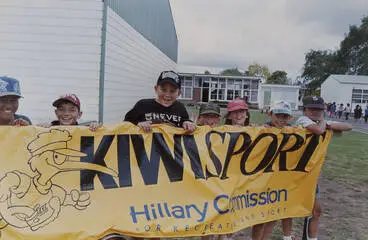

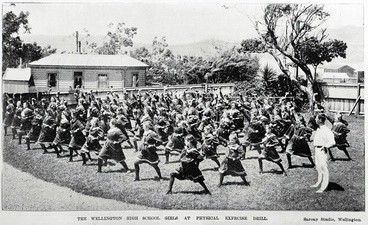


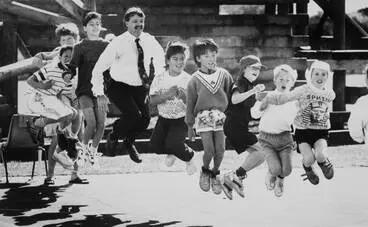
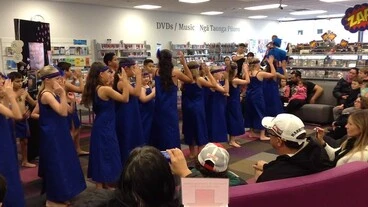

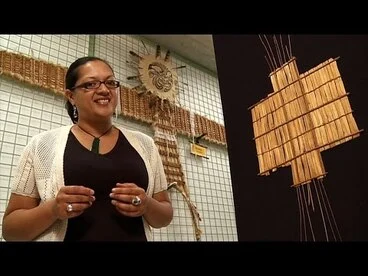
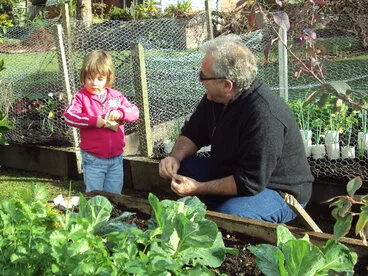
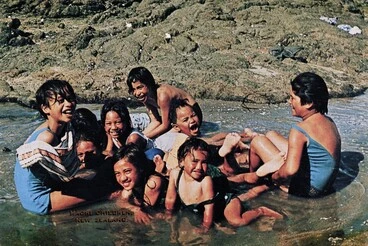







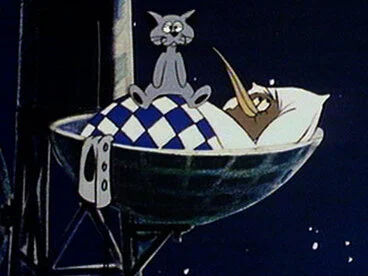


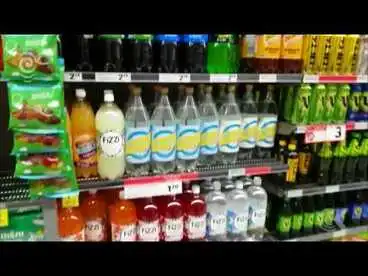
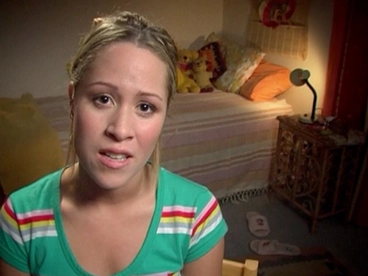

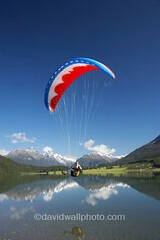
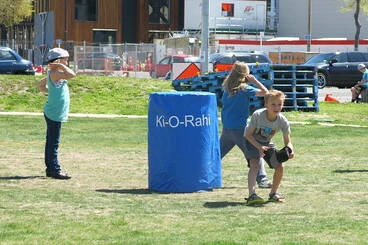

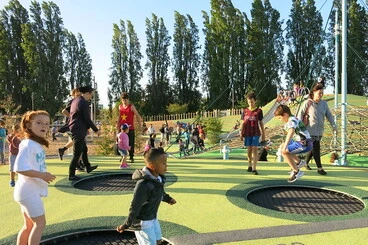
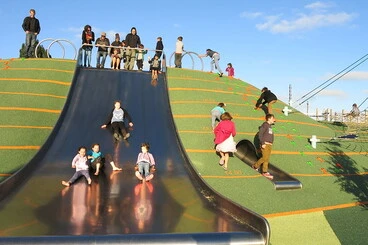
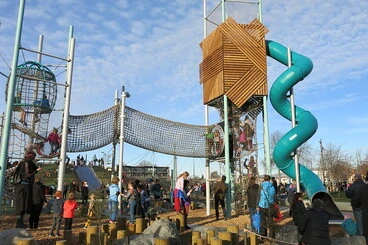
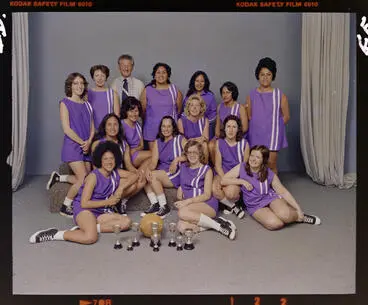
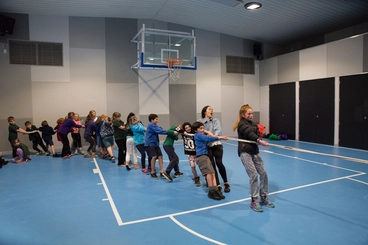

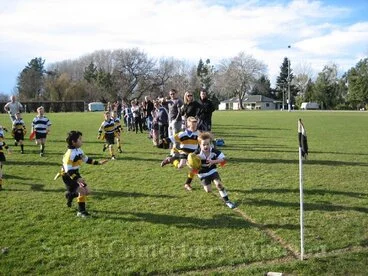
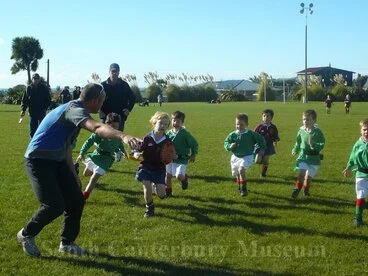
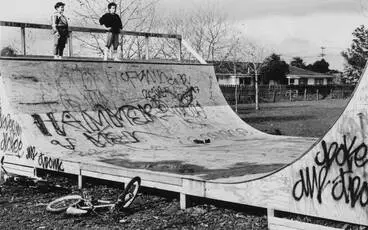
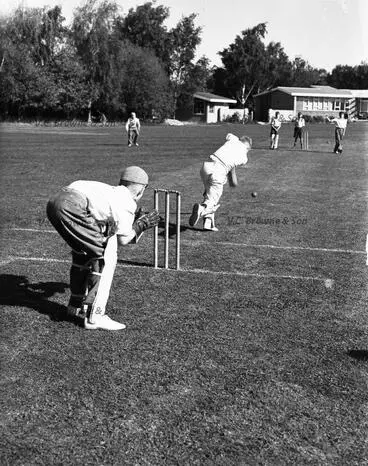
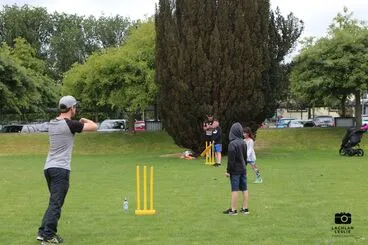
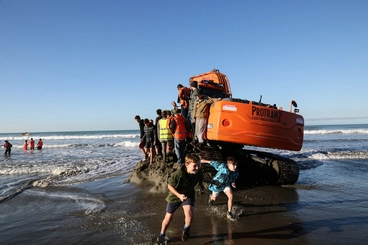
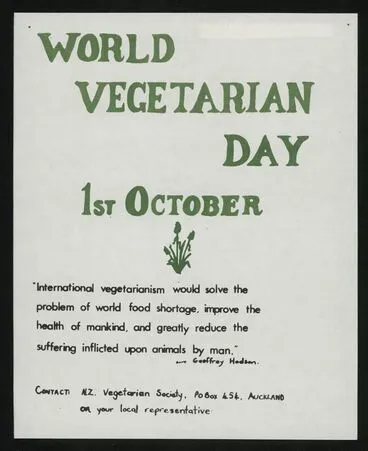
![Dental Health Is In Your Hands [Poster] Image: Dental Health Is In Your Hands [Poster]](https://thumbnailer.digitalnz.org/?resize=770x&src=https%3A%2F%2Fcollection.pukeariki.com%2Frecords%2Fimages%2Flarge%2F81628%2F7d92d09adbe36124ac0880d8389819779c52a980.jpg&resize=368%253E)
![Use Your Toothbrush After Every meal [Poster] Image: Use Your Toothbrush After Every meal [Poster]](https://thumbnailer.digitalnz.org/?resize=770x&src=https%3A%2F%2Fcollection.pukeariki.com%2Frecords%2Fimages%2Flarge%2F500%2Fc3fc6711ac49d0cd50701a6ee1ffe7c96fd9b523.jpg&resize=368%253E)
![For Children's Health Camps buy Health Stamps [poster] Image: For Children's Health Camps buy Health Stamps [poster]](https://thumbnailer.digitalnz.org/?resize=770x&src=https%3A%2F%2Fcollection.pukeariki.com%2Frecords%2Fimages%2Flarge%2F81517%2F1ce0a223a09990e6339066462b434bacf7063b2d.jpg&resize=368%253E)
!["Make Health "Catching" buy Health Stamps for Health Camps" [poster] Image: "Make Health "Catching" buy Health Stamps for Health Camps" [poster]](https://thumbnailer.digitalnz.org/?resize=770x&src=https%3A%2F%2Fcollection.pukeariki.com%2Frecords%2Fimages%2Flarge%2F81518%2F4a1bd65e51d192b12abeb08537d549a1b299e764.jpg&resize=368%253E)
![Noise defeans! Use ear protection [Department of Labour and Health safety poster]
Poster Image: Noise defeans! Use ear protection [Department of Labour and Health safety poster]
Poster](https://thumbnailer.digitalnz.org/?resize=770x&src=https%3A%2F%2Fs3.amazonaws.com%2Fpastperfectonline%2Fimages%2Fmuseum_58%2F133%2F2014080027.jpg&resize=368%253E)
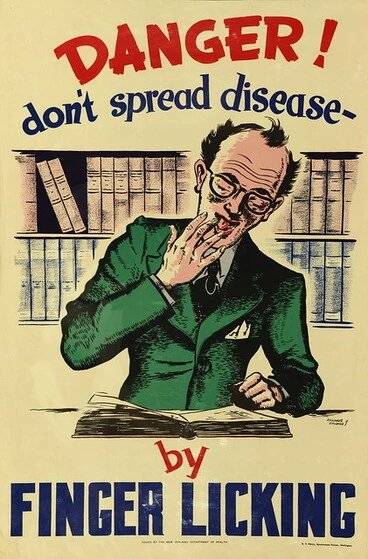
![10 wage earners ...keep them safe [Department of Labour and Health safety poster]
Poster Image: 10 wage earners ...keep them safe [Department of Labour and Health safety poster]
Poster](https://thumbnailer.digitalnz.org/?resize=770x&src=https%3A%2F%2Fs3.amazonaws.com%2Fpastperfectonline%2Fimages%2Fmuseum_58%2F133%2F2014080035.jpg&resize=368%253E)
![Food For Health [poster] Image: Food For Health [poster]](https://thumbnailer.digitalnz.org/?resize=770x&src=https%3A%2F%2Fcollection.pukeariki.com%2Frecords%2Fimages%2Flarge%2F81587%2F292677508aebb8741bac8746a0c2125ed92ba198.jpg&resize=368%253E)



